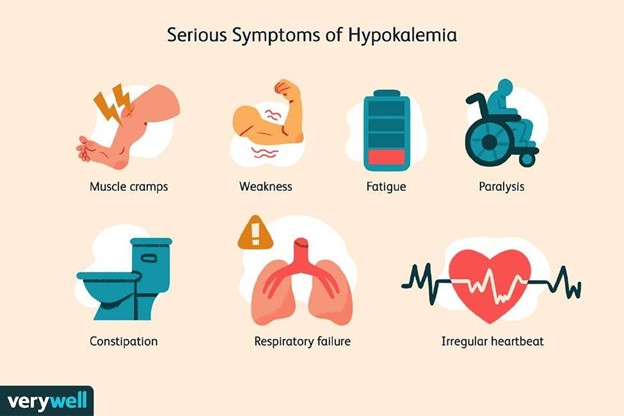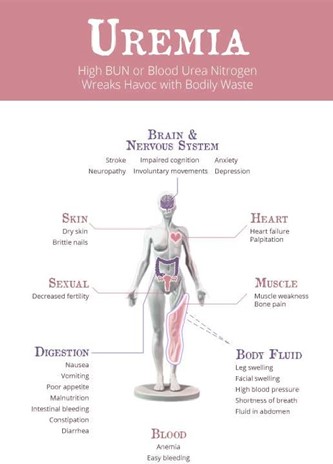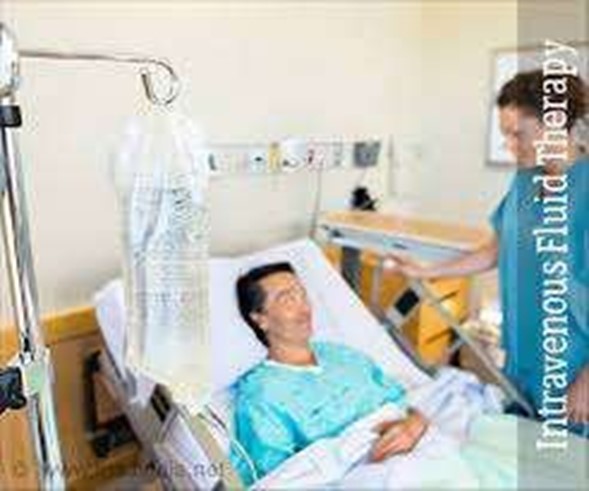A client is admitted with dehydration and hypokalemia.
Which of the following signs and symptoms would the nurse expect to find (Select all that apply).
Muscle weakness.
Constipation.
Hyperreflexia.
Cardiac dysrhythmias.
Nausea and vomiting.
Correct Answer : A,B,D

These are all signs and symptoms of hypokalemia, which is a condition where the blood potassium level is too low. This can affect the function of the muscles, nerves, and heart. Therefore, the nurse would expect to find these signs and symptoms in a client with dehydration and hypokalemia.
Choice C is wrong because hyperreflexia is not a sign or symptom of hypokalemia.
Hyperreflexia is a condition where the reflexes are exaggerated or overactive.
This can be caused by conditions such as spinal cord injury, stroke, or electrolyte imbalances such as hypocalcemia or hypomagnesemia.
Nursing Test Bank
Naxlex Comprehensive Predictor Exams
Related Questions
Correct Answer is B
Explanation

Uremia is a condition where there is an excess of urea and other nitrogenous wastes in the blood, usually excreted by the kidneys into the urine. It occurs when the kidneys stop filtering toxins out through your urine and can be a sign of end-stage renal (kidney) disease.
Choice A is wrong because azotemia is the buildup of nitrogen waste products in the blood, not urea.
Choice C is wrong because anuria is the absence or reduction of urine output.
Choice D is wrong because oliguria is the low output of urine.
Correct Answer is B
Explanation

Hyponatremia is a condition where the serum sodium level is below 135 mEq/L, which can affect the normal functioning of cells, muscles, and organs.
Administering intravenous fluids with a high sodium content can help restore the sodium balance and prevent complications such as confusion, seizures, and coma.
Choice A is wrong because encouraging the patient to consume a low-sodium diet would worsen the hyponatremia and increase the risk of electrolyte imbalance.
Choice C is wrong because administering a diuretic medication to increase urine output would cause further fluid and sodium loss and exacerbate the hyponatremia.
Choice D is wrong because encouraging the patient to increase fluid intake would dilute the sodium concentration and lower the serum sodium level.
Whether you are a student looking to ace your exams or a practicing nurse seeking to enhance your expertise , our nursing education contents will empower you with the confidence and competence to make a difference in the lives of patients and become a respected leader in the healthcare field.
Visit Naxlex, invest in your future and unlock endless possibilities with our unparalleled nursing education contents today
Report Wrong Answer on the Current Question
Do you disagree with the answer? If yes, what is your expected answer? Explain.
Kindly be descriptive with the issue you are facing.
